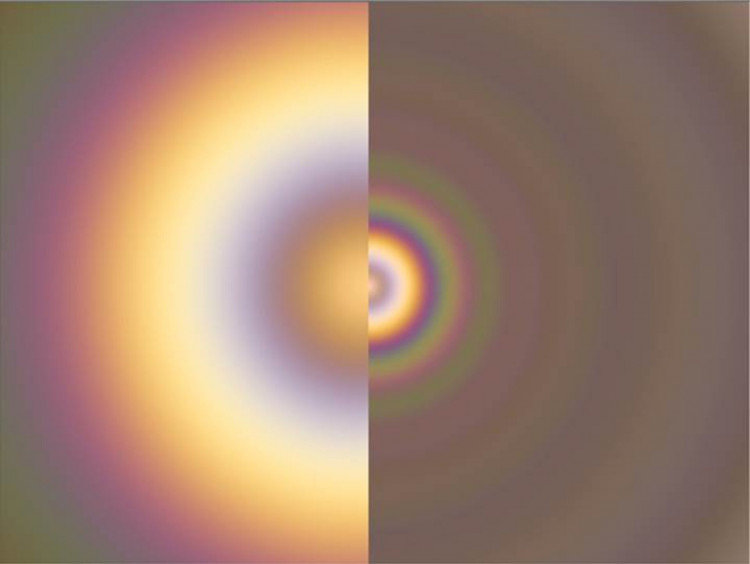Rainbow-like ‘glory’ lights observed outside our solar system for first by University of Warwick astronomers
By James Smith 5th Apr 2024
By James Smith 5th Apr 2024

Astronomers from the University of Warwick have detected signs of the rainbow-like 'glory' effect on a planet outside our solar system for the first time.
Spotted on a world 637 light years away from Earth, it may offer new information on how habitable distant planets could be.
'Glory' lights are concentric rings of light that only occur under specific conditions – namely, when light is reflected off clouds made up of a uniform, but so far unknown, substance.
The effect, often seen on Earth and mistaken for a rainbow, is understood to happen when light passes between a narrow opening, such as between water droplets in clouds, causing it to diffract and create ring-like patterns.
The effect has only once been found on another planet – Venus – meaning that, if confirmed, this is the first 'glory' to ever be detected outside our solar system.
Scientists from the University of Warwick believe the 'glory' occurred on a planet called WASP-76b, which is located some 637 light years away from Earth.
First discovered in 2013, WASP-76b, which is nearly double the size of Jupiter, is known for its 'hellish' atmosphere.

One side always faces the sun, reaching unbearably hot temperature of 2,400 degrees Celsius, and one side always faces away from the sun, living in an 'endless' night where clouds drip iron molten rain.
However, observations from the European Space Agency's Characterising Exoplanet Satellite (CHEOPS) suggest that between these two sides, there may be a 'glory'.
Co-author Dr Thomas Wilson said: "Never before have we seen these colourful, concentric rings on an extrasolar body.
"So, if confirmed with future studies, this first exoplanetary glory would make WASP-76b a truly unique body - and give us a beautiful tool for understanding the atmospheres of distance exoplanets and how habitable they could be."
Meanwhile, lead author Dr Olivier Demangeon, from the Institute of Astrophysics and Space Sciences in Portugal, added: "There's a reason no glory has been seen before outside our solar system – it requires very peculiar conditions.
"First, you need atmospheric particles that are close-to-perfectly spherical, completely uniform, and stable enough to be observed over a long time.
"Then, the planet's nearby star needs to shine directly at it, with the observer at just the right orientation."

The ground-breaking discovery about WASP-76b was made after scientists recorded 23 observations over three years as it passed in front of and around its Sun-like star.
Data collected showed a surprising increase in the amount of light coming from the planet's eastern 'terminator' – the boundary where night meets day.
This allowed astronomers to determine the origin of the signal.
Dr Demangeon explained: "This is the first time that such a sharp change has been detected in the brightness of an exoplanet.
"This discovery leads us to hypothesise that this unexpected glow could be caused by a strong, localised, and directionally dependent reflection – the glory effect."
He said that the next steps would be to use NASA's James Webb Space Telescope (JWST) to officially confirm that this is the 'glory' effect.
"Confirmation would imply that the temperature of WASP-76b's atmosphere must be stable over time, enabling the presence of clouds made up of perfectly spherical water droplets crucial to glory formation," Dr Demangeon concluded.
CHECK OUT OUR Jobs Section HERE!
kenilworth vacancies updated hourly!
Click here to see more: kenilworth jobs
Share:



























